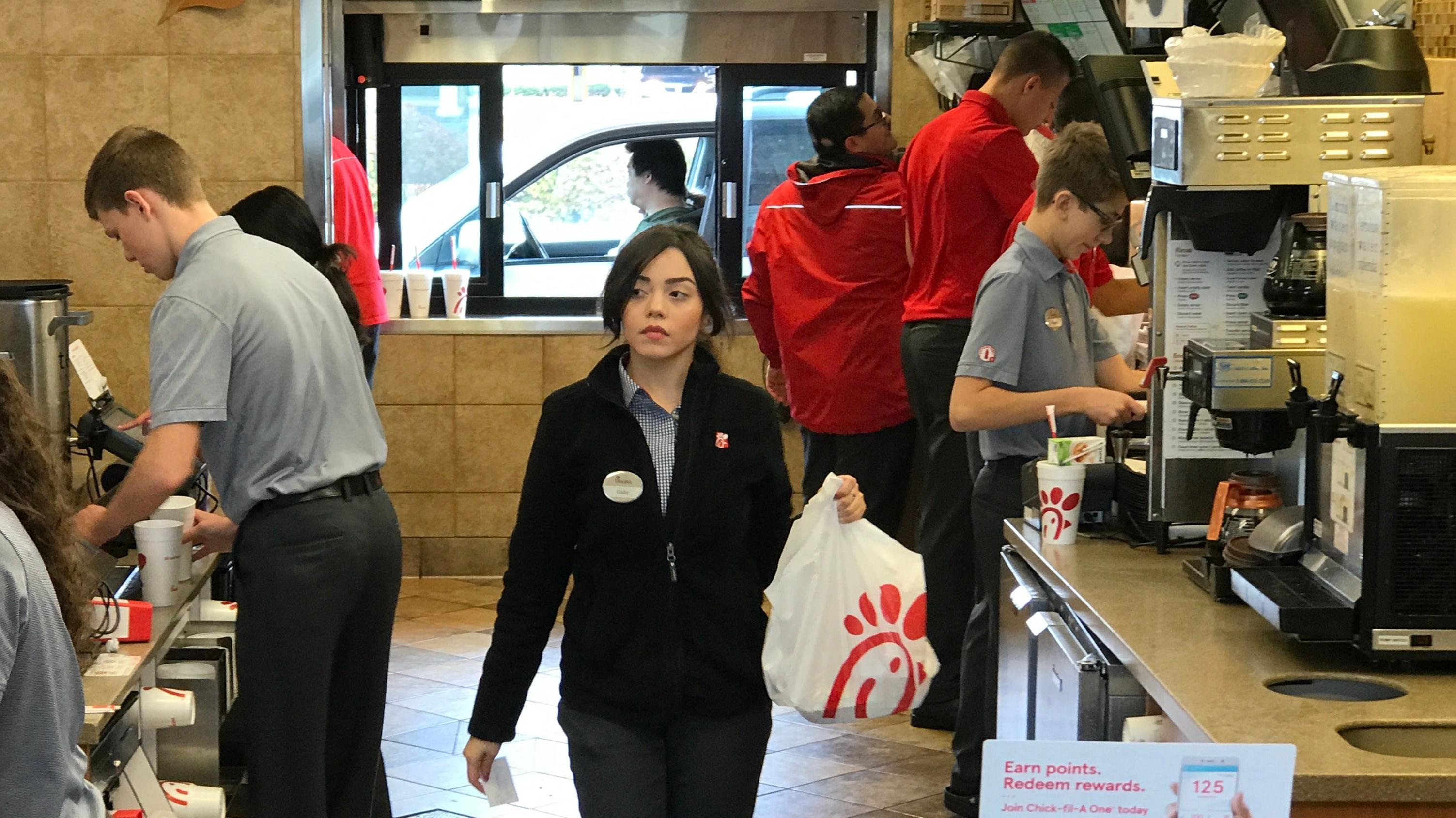Chick-Fil-A's Three-Day Work Week Has Had Stunning Results
A Miami Chick-fil-A is puzzling through how to make a schedule that works for everyone.
For office workers, the past year has involved fraught discussions around what getting back to "normal" in the workplace looks like—and if that "normalcy" is really even what we want anymore. One increasingly popular suggestion is the four-day work week. Just last month The New York Times reported that several British companies using the new schedule on a trial basis found it to be successful: Not only did most companies report no loss in productivity, but several saw improvements. Now, despite the differences between office and restaurant workplaces, Chick-fil-A is giving it a shot with a three-day work week.
Chick-fil-A’s three-day work week, explained
In a corporate setting, the four-day work week includes four days of working typical hours, usually 9 a.m. to 5 p.m., with one paid day off work (in addition to typical weekends). In a restaurant, however, that looks a little different.
According to QSR Magazine, Chick-fil-A's model doesn't actually reduce the number of hours worked, but instead condenses a week's worth of shifts into three days. Employees would have a set three days during which they would work 13- to 14-hour shifts and then have at least four days off. This model, of course, is easier to implement at Chick-fil-A because all of its locations are closed Sunday and only open six days a week—other chains would have to adjust to a seven-day work week.
As of now, this is only being tested at one Chick-fil-A location in Miami, and that store's operator, Justin Lindsey, tells QSR that there were some obvious concerns from the team at first. For one, being on your feet 13 to 14 hours a day isn't exactly ideal, and the logistics of scheduling, asking for time off, and retaining benefits seemed unclear. Lindsey made it clear that they would be figuring out a lot together as they went.
The benefits of a three-day work week
For workers, a set schedule that only takes up three days can help with childcare planning, scheduling other gigs, or simply having more days free for whatever they need to do. And by squeezing long shifts into three days, workers can still be full-time and retain any benefits that come with that.
For the employer, there are benefits to keeping up momentum during shift changes, allowing set teams to really learn how each other works. And a model that keeps employees happy helps with hiring and retention. When the three-day work week was introduced at this Miami location in February, more than 400 applications flooded in, and ever since, there's been a 100% retention rate at the management level. That stability trickles down and fosters a better working environment for all employees.
But the biggest boon from this experiment, one that might make it more widely used in all restaurants, is the bottom line. We all know that as much as businesses claim to look out for their employees' well-being it's still all about making money. And good news for all involved, because this Chick-fil-A is on track to be one of the top earning locations in the franchise—average annual sales for a single location of the chain are around $8.4 million and Lindsey's location is set to bring in $17 million by the end of the year. Fast food chains of America, take note.
